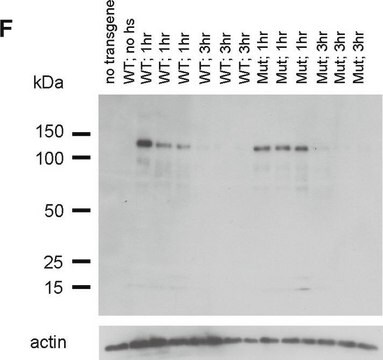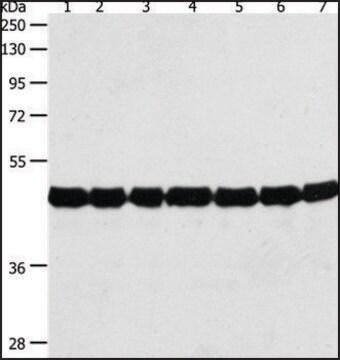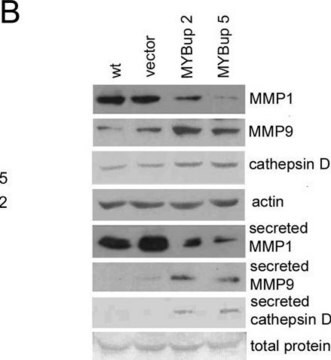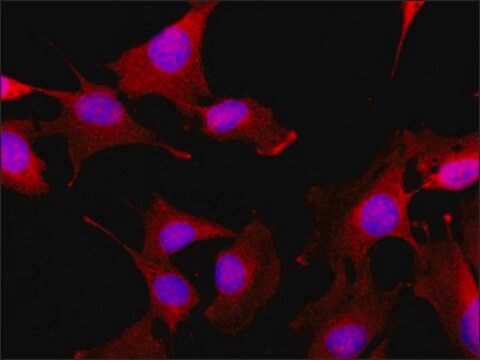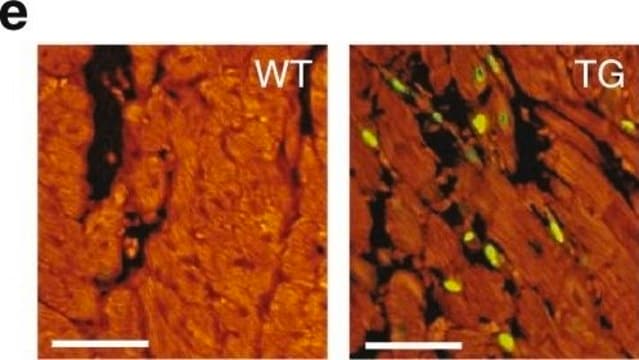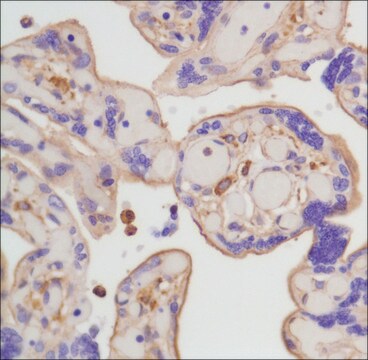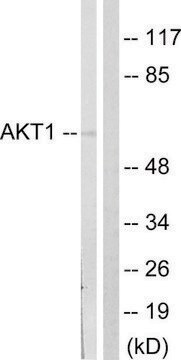A2103
Anti-Actin, N-terminal antibody produced in rabbit

~0.5 mg/mL, affinity isolated antibody, buffered aqueous solution
Synonyme(s) :
Actin Detection Antibody, Rabbit Anti-Actin
About This Item
Produits recommandés
Source biologique
rabbit
Niveau de qualité
Conjugué
unconjugated
Forme d'anticorps
affinity isolated antibody
Type de produit anticorps
primary antibodies
Clone
polyclonal
Forme
buffered aqueous solution
Poids mol.
antigen 42 kDa
Espèces réactives
frog, rat, mouse, chicken, human
Conditionnement
antibody small pack of 25 μL
Validation améliorée
independent
Learn more about Antibody Enhanced Validation
Concentration
~0.5 mg/mL
Technique(s)
immunocytochemistry: 1-2 μg/mL using cultured chicken fibroblasts
immunohistochemistry (formalin-fixed, paraffin-embedded sections): 2-4 μg/mL using sections of human appendix, mouse heart, and frog skeletal muscle
indirect immunofluorescence: suitable
western blot: 0.5-1 μg/mL using whole extract of the human epitheloid carcinoma HeLa cell line.
western blot: 2-4 ng/mL using whole extract of rat skeletal muscle
Numéro d'accès UniProt
Conditions d'expédition
wet ice
Température de stockage
−20°C
Modification post-traductionnelle de la cible
unmodified
Informations sur le gène
human ... ACTA1(58) , ACTA2(59) , ACTB(60) , ACTC1(70) , ACTG1(71) , ACTG2(72)
mouse ... Acta1(11459) , Acta2(11475) , Actb(11461) , Actc1(11464) , Actg1(11465) , Actg2(11468)
rat ... Acta1(29437) , Acta2(81633) , Actb(81822) , Actc1(29275) , Actg1(287876) , Actg2(25365)
Description générale
Immunogène
Application
- immunoblotting
- quantitative chromatin immunoprecipitation (qChIP)
Actions biochimiques/physiologiques
Forme physique
Autres remarques
Clause de non-responsabilité
Vous ne trouvez pas le bon produit ?
Essayez notre Outil de sélection de produits.
En option
Code de la classe de stockage
12 - Non Combustible Liquids
Classe de danger pour l'eau (WGK)
WGK 2
Équipement de protection individuelle
Eyeshields, Gloves, multi-purpose combination respirator cartridge (US)
Certificats d'analyse (COA)
Recherchez un Certificats d'analyse (COA) en saisissant le numéro de lot du produit. Les numéros de lot figurent sur l'étiquette du produit après les mots "Lot" ou "Batch".
Déjà en possession de ce produit ?
Retrouvez la documentation relative aux produits que vous avez récemment achetés dans la Bibliothèque de documents.
Les clients ont également consulté
Notre équipe de scientifiques dispose d'une expérience dans tous les secteurs de la recherche, notamment en sciences de la vie, science des matériaux, synthèse chimique, chromatographie, analyse et dans de nombreux autres domaines..
Contacter notre Service technique

